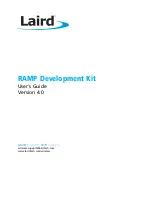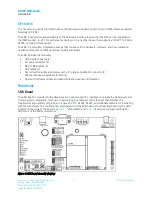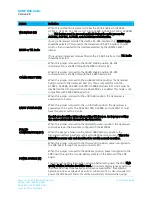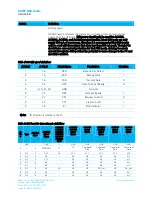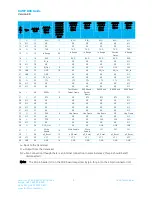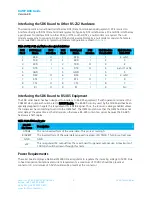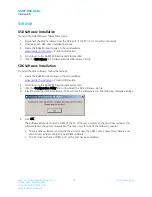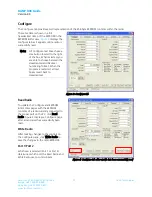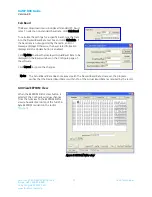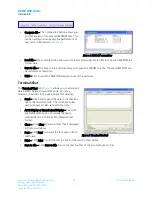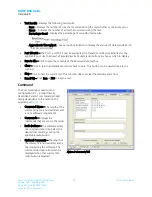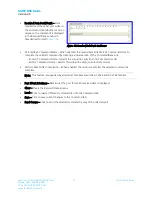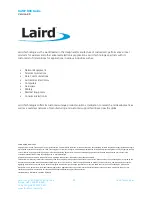
RAMP DVK Guide
Version 4.0
Americas: +1-800-492-2320 Option 3
15
Laird Technologies
Europe: +44-1628-858-940
Hong Kong: +852 2923 0610
www.lairdtech.com/ramp
Range Test
The Range Test tab allows you to send data packets
between two radios and it reports the number of
successes and errors. (
Test Selection – There are six test options; each
uses one of the following hardware setups:
Setup #1: One radio is plugged into a serial or
USB port on a PC. The second radio is
plugged into a separate power supply
and has the Comm Select jumper set
to
Loopback.
Setup #2: One radio is plugged into a serial or
USB port on a PC. The second radio is
plugged into a different serial or USB
port on the same computer.
Setup #3: One radio is plugged into a serial or
USB port on a PC. The second radio is
connected to a serial or USB port on
another PC.
Figure 8: Range Test tab
If using two PCs for the test, the software on both sides should have the second COM port disabled on
the Settings tab.
Port 1 Action
Port 2 Action
Hardware Setup
Port 1
Port 2
Tx
Rx
2
Port 2
Port 1
Rx
Tx
2
Port 1
Port 2
Tx/Rx
Tx/Rx
2
Port 1 Send Only
Tx
Not Applicable
3
Port 1 Receive Only
Rx
Not Applicable
3
Port 1 Loopback
Tx/Rx
Not Applicable
1
Transmit Packet Selection – This section allows you to select the data packet used to perform the range
test. You may either create data of a specified byte length or load your own text or configuration file.
Test Type – Select one of the following to determine the type and length of the test:
Test Type
Description
Continuous
Test runs until stopped
Timed
Test runs for a specified time
Number of Runs Test runs for a specified number of runs
Single Step
Test runs for a single step
Break on Error
Test runs until an error occurs
Receive Packet Display – This section allows you to select how the received packets are displayed.
Received packets can be displayed in ASCII or Hexadecimal format, marked with a time stamp, and/or
displayed only when an error occurs.
Timing –This section allows you to modify the Transmit and Receive timing of the test.
-
Tx Delay – Allows you to modify (in ms) the delay between transmissions.
-
Rx Timeout – Allows you to specify the total amount of time that you want a packet to be
displayed.

